Investigation of Flotation Bubbles Movement Behavior under the Influence of an Immersed Ultrasonic Vibration Plate
Abstract
1. Introduction
2. Theory and Experimentation
2.1. Bubble Force Model
2.2. Vibration Plate Model
2.3. Experimental System
3. Results and Discussion
3.1. Vibration Characterization of Immersed Ultrasonic Vibration Plate
3.2. Bubble Motion Characteristics under the Intervention of Ultrasonic Vibration Plate
3.3. Simulation Analysis of Bubble Distribution with and without Ultrasonic Field
3.3.1. Experimental Distribution Characteristics of Bubbles in the Absence of Ultrasonic Field
3.3.2. Experimental Distribution Characteristics of Bubbles under Ultrasonic Field
3.3.3. Aggregation Characteristics of Bubbles under the Action of Ultrasonic Field
3.3.4. Motion Velocity Characteristics of Bubbles in an Ultrasonic Field
4. Conclusions
Author Contributions
Funding
Data Availability Statement
Conflicts of Interest
References
- Ren, L.Y.; Zhang, Y.M.; Qin, W.Q.; Bao, S.X.; Wang, J. Collision and attachment behavior between fine cassiterite particles and H2 bubbles. Trans. Nonferrous Met. Soc. China 2014, 24, 520–527. [Google Scholar] [CrossRef]
- Li, Y.J.; Liu, M.Y.; Li, X.N. Single bubble behavior in gas-liquid- solid mini-fluidized beds. Chem. Eng. J. 2016, 286, 497–507. [Google Scholar] [CrossRef]
- Norori-McCormac, A.; Brito-Parada, P.R.; Hadler, K.; Cole, K.; Cilliers, J.J. The effect of particle size distribution on froth stability in flotation. Sep. Purif. Technol. 2017, 184, 240–247. [Google Scholar] [CrossRef]
- Gao, F.; Peng, Y.Y.; Li, C.; Cui, W.; Yang, Z.H.; Zeng, G.M. Coupled nutrient removal from secondary effluent ad algal biomass production in membrane photobioreactor (MPBR): Effect of HRT and long-term operation. Chem. Eng. J. 2018, 335, 169–175. [Google Scholar] [CrossRef]
- Gao, K.D.; Hong, L.; Sun, L.Q.; Zhang, Z.H. Effect of Gas Input Conditions and Ultrasound on the Dynamic Behavior of Flotation Bubbles. ACS Omega 2022, 7, 22326–22340. [Google Scholar] [CrossRef] [PubMed]
- Ziegenhein, T.; Lucas, D. Observations on bubble shapes in bubble columns under different flow conditions. Exp. Therm. Fluid Sci. 2017, 85, 248–256. [Google Scholar] [CrossRef]
- Zhang, Y.C.; Wang, W.; Xu, X.; Yang, Q. Effect of bubble size on bubble rising velocity and stagnation in a granular bed. Chem. Eng. J. Adv. 2022, 12, 100425. [Google Scholar] [CrossRef]
- Li, C.W.; Dong, L.N.; Zhang, H.J. Recovery of clean coal from tailings by flotation with aid of ultrasonic. Energy Sources Part A Recovery Util. Environ. Eff. 2018, 40, 373–379. [Google Scholar] [CrossRef]
- Barma, S.D.; Baskey, P.K.; Rao, D.S.; Sahu, S.N. Ultrasonic-assisted flotation for enhancing the recovery of flaky graphite from low-grade graphite ore. Ultrason. Sonochem. 2019, 56, 386–396. [Google Scholar] [CrossRef]
- Filippov, L.O.; Royer, J.J.; Filippova, I.V. Improvement of ore recovery efficiency in a flotation column cell using ultra-sonic enhanced bubbles. J. Phys. Conf. Ser. 2017, 879, 012023. [Google Scholar] [CrossRef]
- Shu, K.Q.; Xu, L.H.; Wu, H.Q.; Fang, S.; Wang, Z.J.; Xu, Y.B.; Zhang, Z.Y. Effects of ultrasonic pre-treatment on the flotation of ilmenite and collector adsorption. Miner. Eng. 2019, 137, 124–132. [Google Scholar] [CrossRef]
- Shu, K.Q.; Xu, L.H.; Wu, H.Q.; Wang, Z.J.; Xu, Y.B.; Fang, S. Influence of ultrasound pre-treatment on ilmenite surface chemical properties and collectors’ adsorption behaviour. Ultrason. Sonochem. 2019, 57, 98–107. [Google Scholar] [CrossRef]
- Gungoren, C.; Baktarhan, Y.; Demir, I.; Ozkan, S.G. Enhancement of galena-potassium ethyl xanthate flotation system by low power ultrasound. Trans. Nonferrous Met. Soc. China 2020, 30, 1102–1110. [Google Scholar] [CrossRef]
- Wu, H.Q.; Fang, S.; Shu, K.Q.; Xu, Y.B.; Wang, Z.J.; Luo, L.P.; Yang, J.; Xu, L.H. Selective flotation and adsorption of ilmenite from titanaugite by a novel method: Ultrasonic treatment. Powder Technol. 2020, 363, 38–47. [Google Scholar] [CrossRef]
- Chen, Y.R.; Ni, C.; Xie, G.Y.; Liu, Q.X. Toward efficient interactions of bubbles and coal particles induced by stable cavitation bubbles under 600 kHz ultrasonic standing waves. Ultrason. Sonochem. 2020, 64, 105003. [Google Scholar] [CrossRef] [PubMed]
- Chen, Y.R.; Truong, V.N.T.; Bu, X.N.; Xie, G.Y. A Review of Effects and Applications of Ultrasound in Mineral Flotation. Ultrason. Sonochem. 2020, 60, 104739. [Google Scholar] [CrossRef]
- Chen, Y.R.; Chelgani, S.C.; Bu, X.N.; Xie, G.Y. Effect of the ultrasonic standing wave frequency on the attractive mineralization for fine coal particle flotation. Ultrason. Sonochem. 2021, 77, 105682. [Google Scholar] [CrossRef] [PubMed]
- Kursun, H.; Ulusoy, U. Zinc Recovery from a Lead-Zinc-Copper Ore by Ultrasonically Assisted Column Flotation. Part. Sci. Technol. 2015, 33, 349–356. [Google Scholar] [CrossRef]
- Jin, L.Z.; Wang, W.D.; Tu, Y.N.; Zhang, K.H.; Lv, Z.Q. Effect of ultrasonic standing waves on flotation bubbles. Ultrason. Sonochem. 2021, 73, 105459. [Google Scholar] [CrossRef]
- Liang, Y.N.; Wang, H.N.; Zhou, R.Q.; Li, D.L.; Zhang, H.J. Effect of ultrasonication on rising characteristics of a single gas bubble. Adv. Powder Technol. 2024, 35, 104305. [Google Scholar] [CrossRef]
- Pourkarimi, Z.; Rezai, B.; Noaparast, M.; Nguyen, A.V.; Chelgani, S.C. Proving the existence of nanobubbles produced by hydrodynamic cavitation and their significant effects in powder flotation. Adv. Powder Technol. 2021, 32, 1810–1818. [Google Scholar] [CrossRef]
- Mao, Y.Q.; Chen, Y.R.; Bu, X.N.; Xie, G.Y. Effects of 20 kHz ultrasound on coal flotation: The roles of cavitation and acoustic radiation force. Fuel 2019, 256, 115938. [Google Scholar] [CrossRef]
- Crum, L.A. Bjerknes forces on bubbles in a stationary sound field. J. Acoust. Soc. Am. 1975, 57, 1363–1370. [Google Scholar] [CrossRef]
- Pelekasis, N.A.; Tsamopoulos, J.A. Bjerknes forces between two bubbles. Part 1. Response to a step change in pressure. J. Fluid Mech. 1993, 254, 467–499. [Google Scholar] [CrossRef]
- Pelekasis, N.A.; Tsamopoulos, J.A. Bjerknes forces between two bubbles. Part 2. Response to an oscillatory pressure field. J. Fluid Mech. 1993, 254, 501–527. [Google Scholar] [CrossRef]
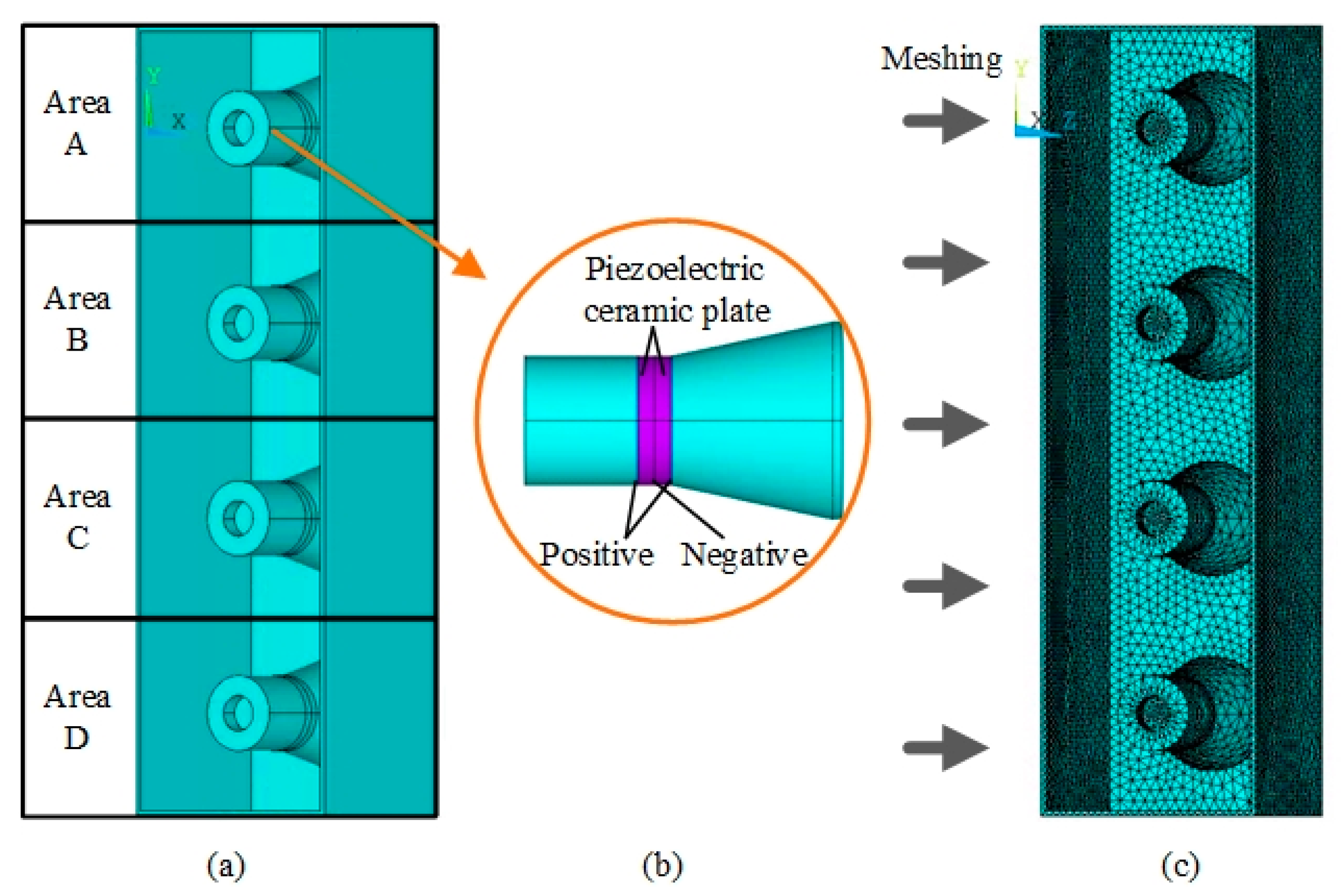
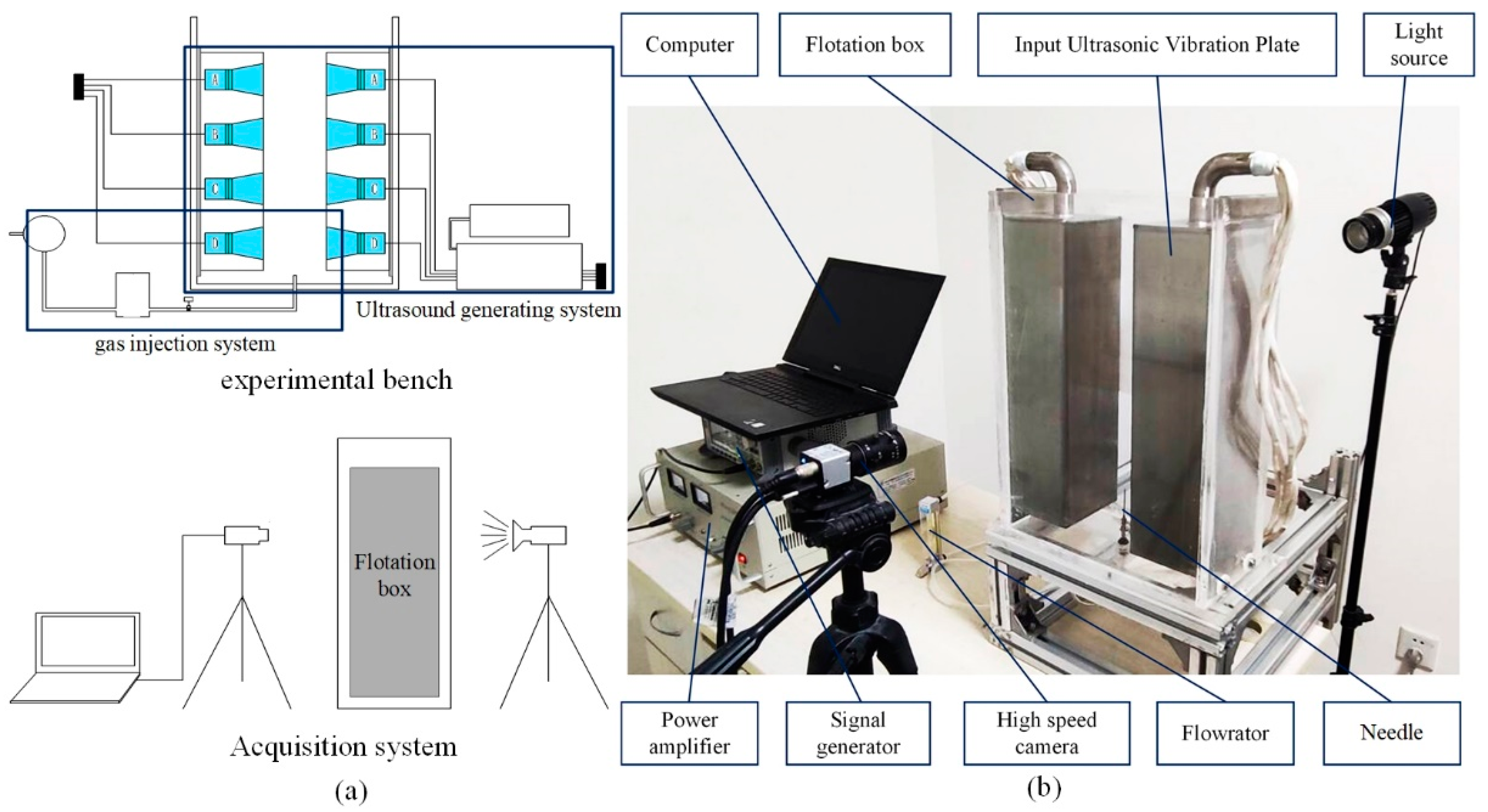
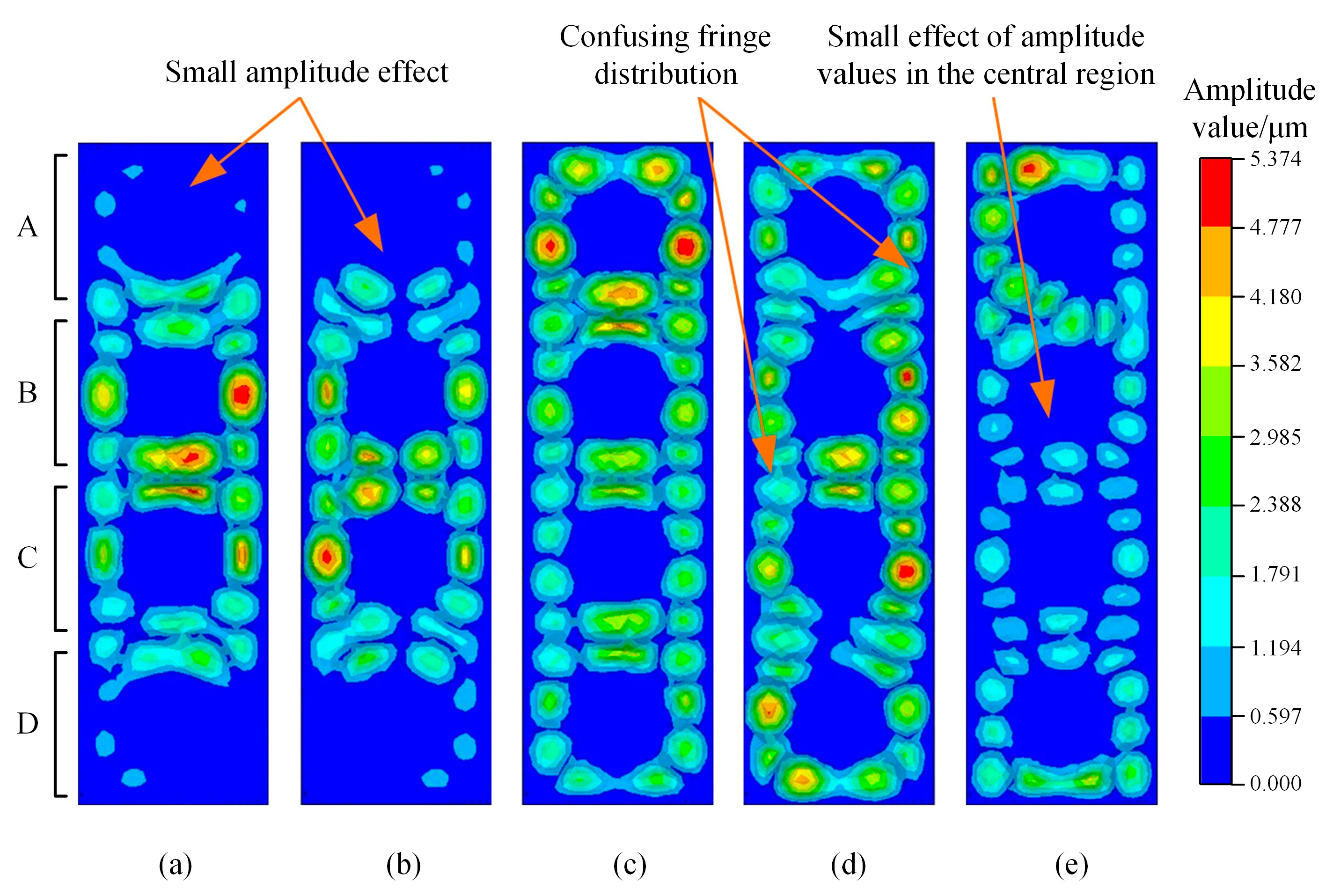
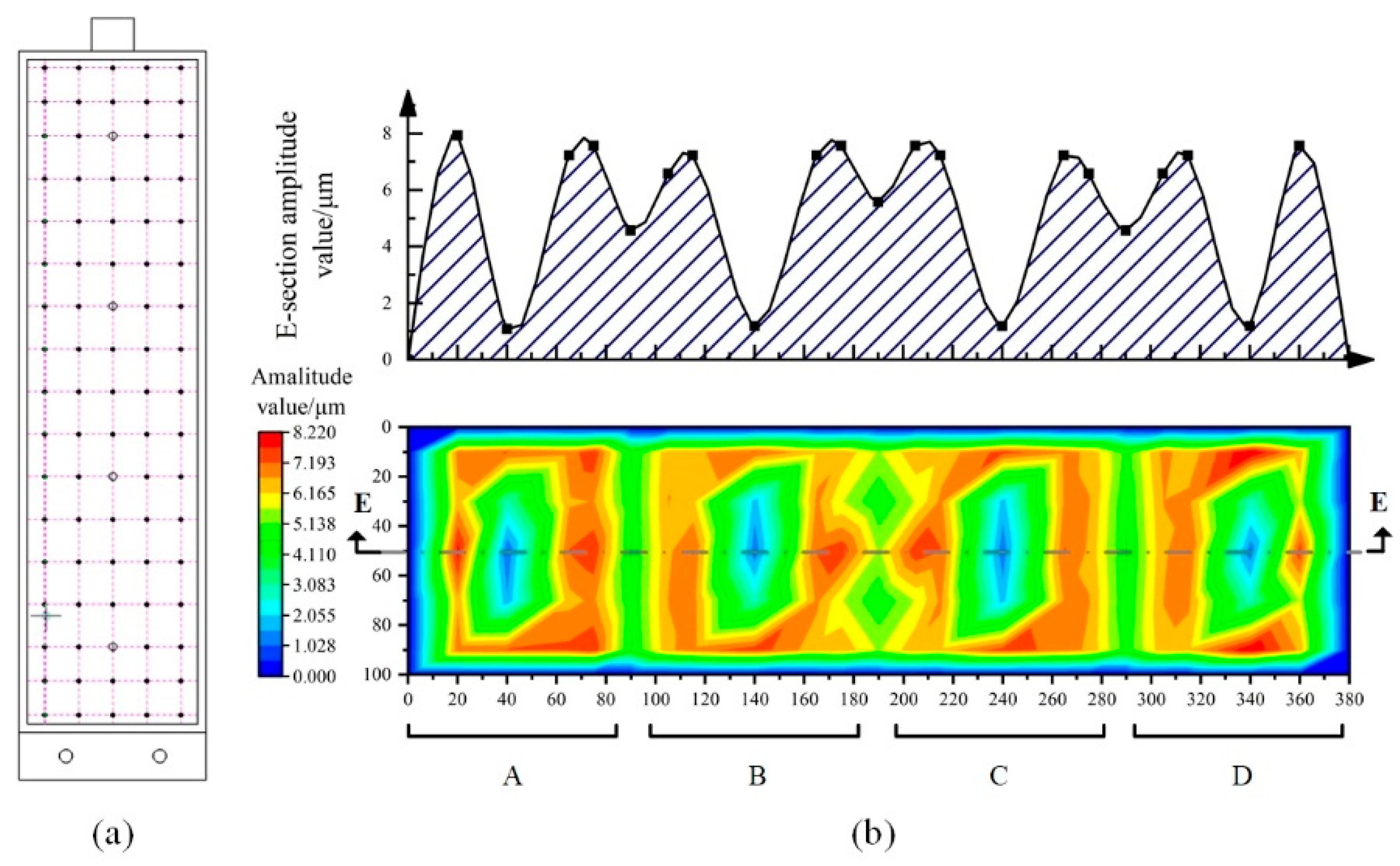
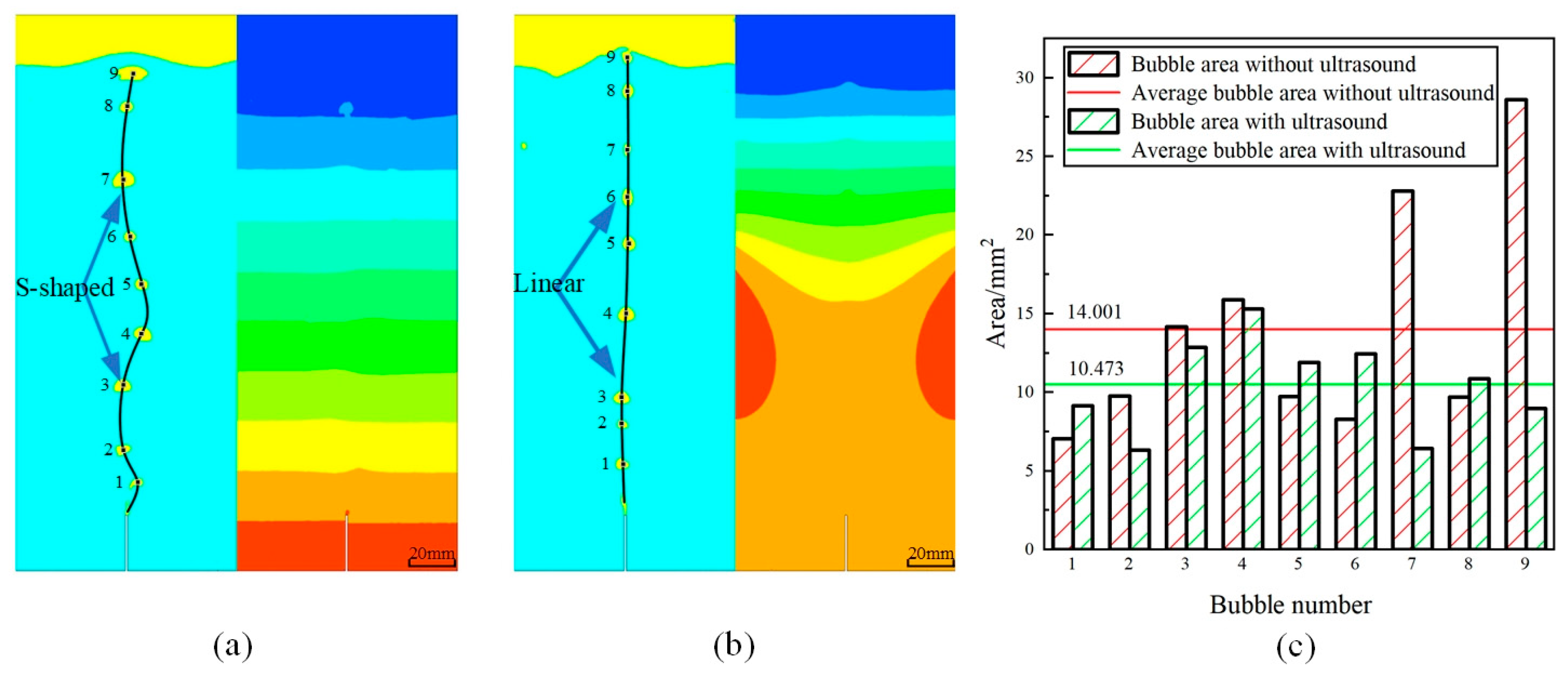

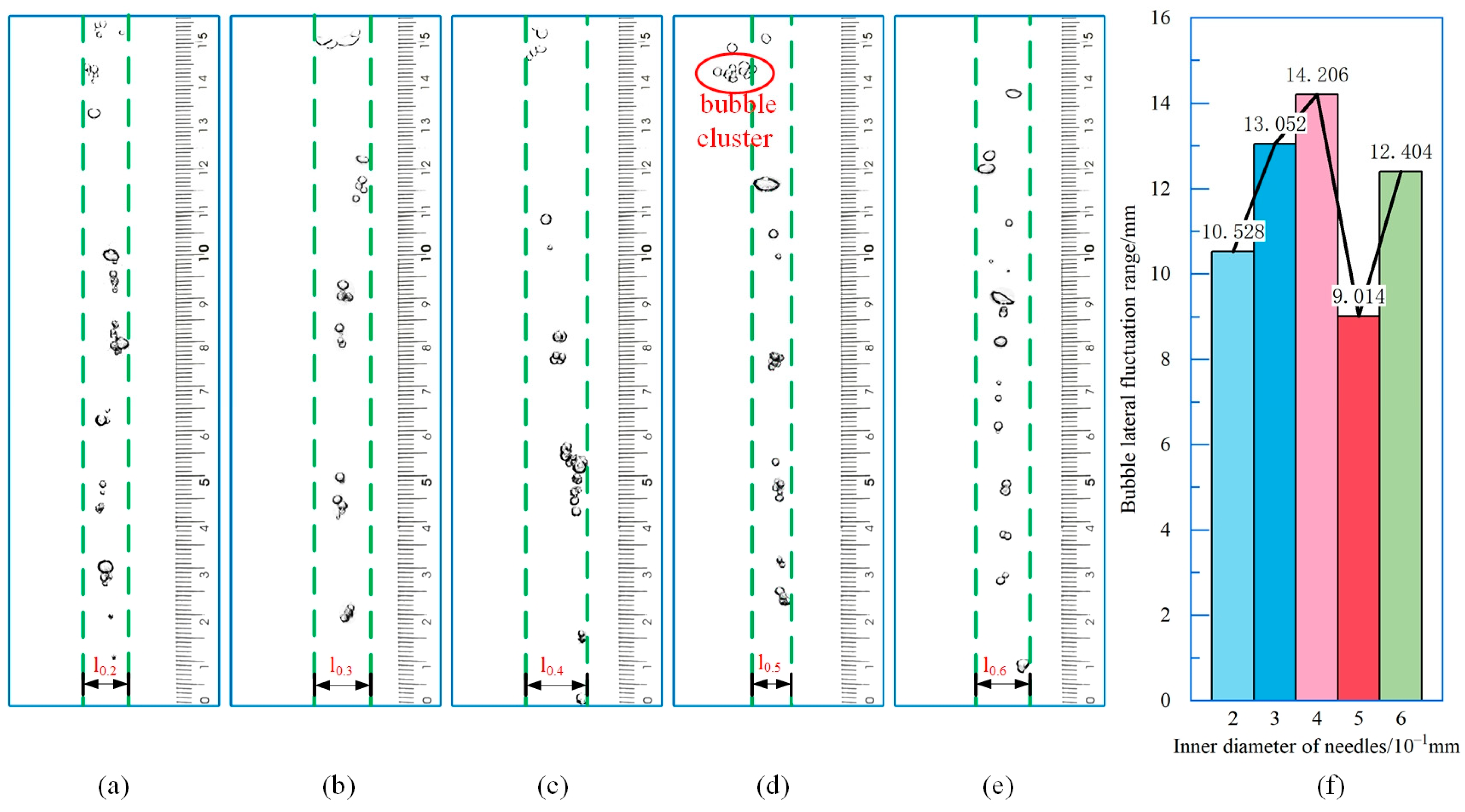

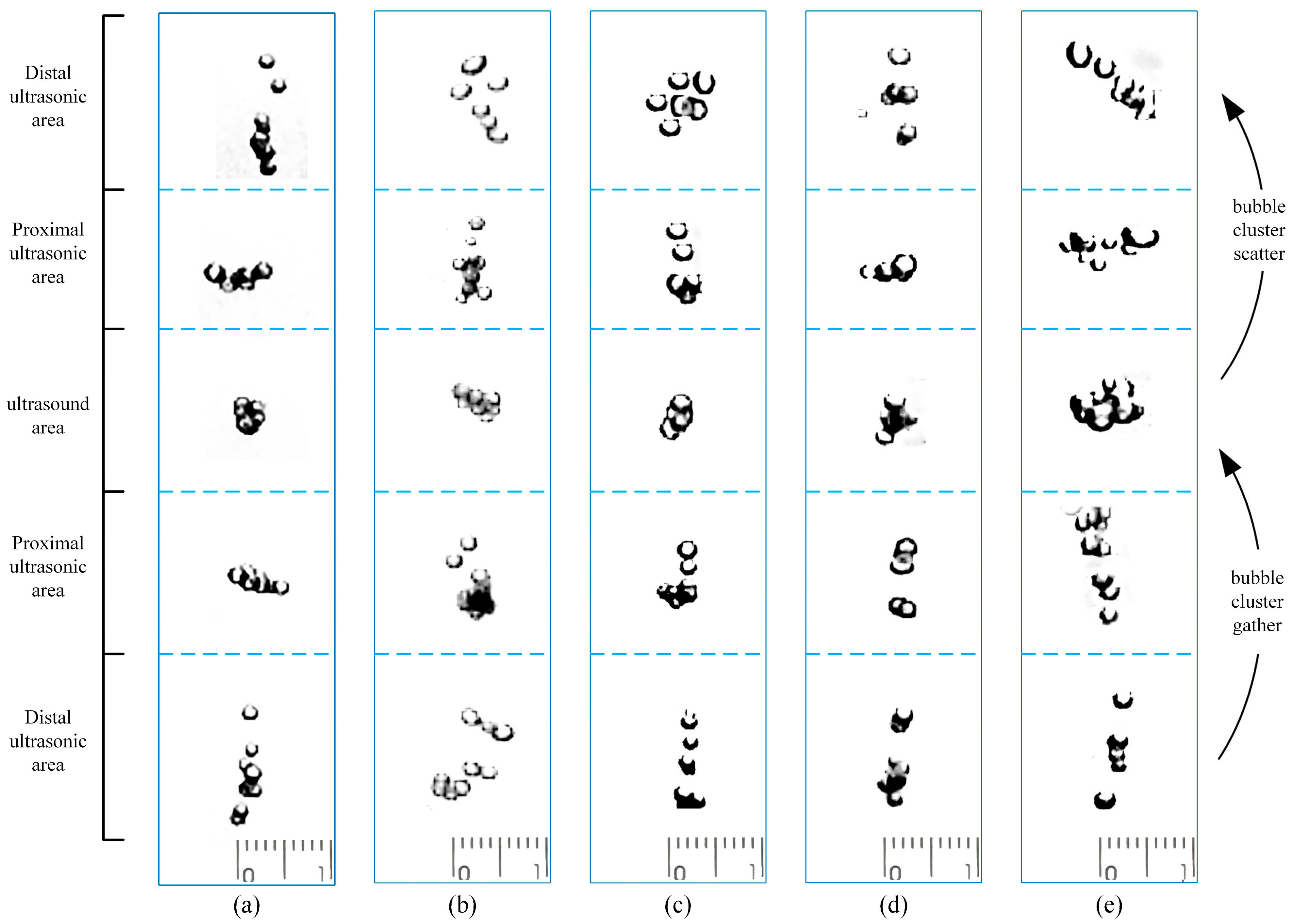
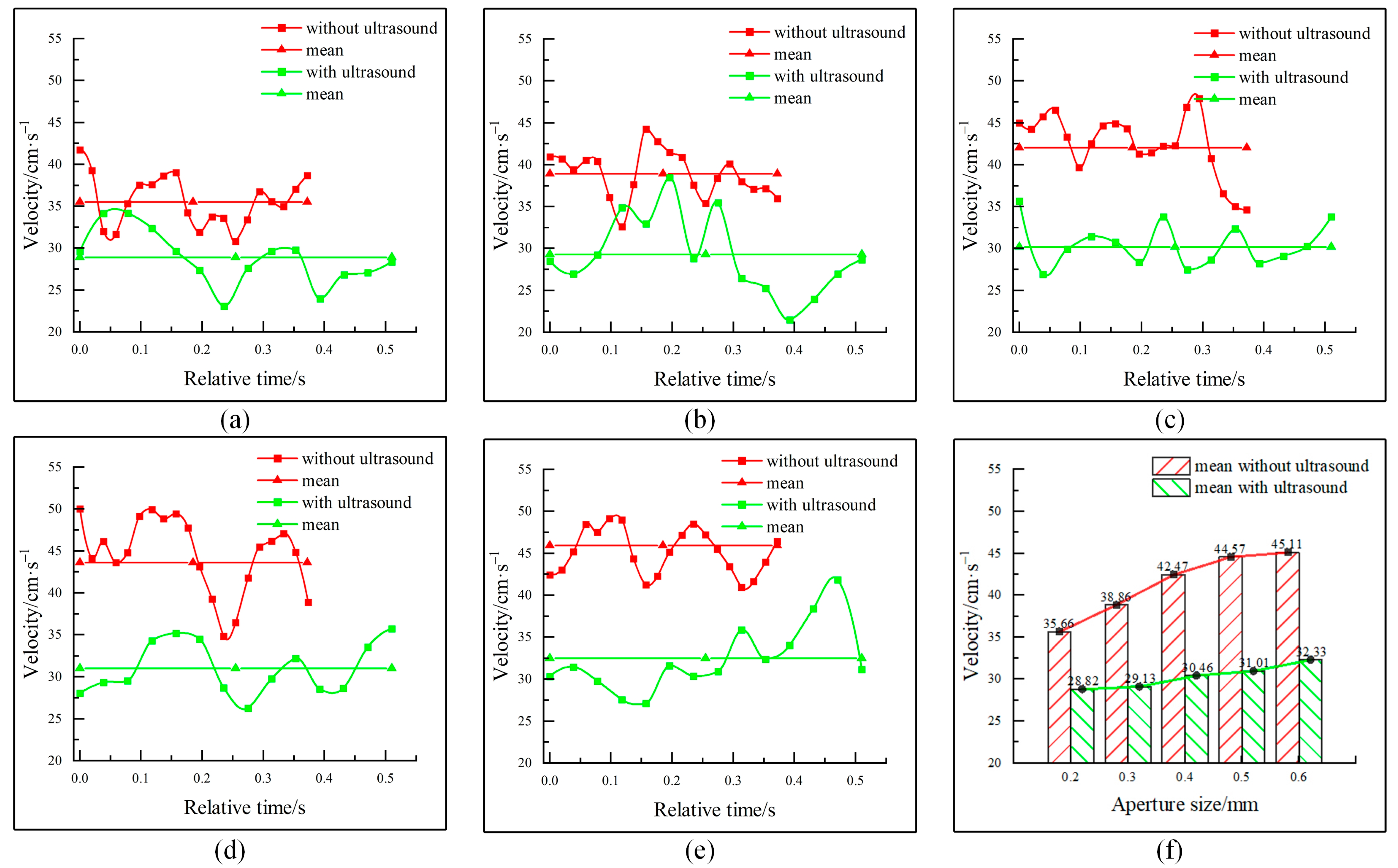
| Needle Number | 1-G27 | 2-G24 | 3-G22 | 4-G21 | 5-G20 |
|---|---|---|---|---|---|
| Inner diameter of needle/mm | 0.2 | 0.3 | 0.4 | 0.5 | 0.6 |
Disclaimer/Publisher’s Note: The statements, opinions and data contained in all publications are solely those of the individual author(s) and contributor(s) and not of MDPI and/or the editor(s). MDPI and/or the editor(s) disclaim responsibility for any injury to people or property resulting from any ideas, methods, instructions or products referred to in the content. |
© 2024 by the authors. Licensee MDPI, Basel, Switzerland. This article is an open access article distributed under the terms and conditions of the Creative Commons Attribution (CC BY) license (https://creativecommons.org/licenses/by/4.0/).
Share and Cite
Gao, K.; Zong, W.; Zhang, Z.; Sun, L.; Li, L. Investigation of Flotation Bubbles Movement Behavior under the Influence of an Immersed Ultrasonic Vibration Plate. Separations 2024, 11, 234. https://doi.org/10.3390/separations11080234
Gao K, Zong W, Zhang Z, Sun L, Li L. Investigation of Flotation Bubbles Movement Behavior under the Influence of an Immersed Ultrasonic Vibration Plate. Separations. 2024; 11(8):234. https://doi.org/10.3390/separations11080234
Chicago/Turabian StyleGao, Kuidong, Wenchao Zong, Zhihua Zhang, Liqing Sun, and Lin Li. 2024. "Investigation of Flotation Bubbles Movement Behavior under the Influence of an Immersed Ultrasonic Vibration Plate" Separations 11, no. 8: 234. https://doi.org/10.3390/separations11080234
APA StyleGao, K., Zong, W., Zhang, Z., Sun, L., & Li, L. (2024). Investigation of Flotation Bubbles Movement Behavior under the Influence of an Immersed Ultrasonic Vibration Plate. Separations, 11(8), 234. https://doi.org/10.3390/separations11080234






